The life-cycle of these is often complex, involving aspects of design, construction, storage, transportation, rigging, use and finally de-rigging. They can be large and heavy, presenting manual handling risks, as well as risk of collapse or toppling.
Those involved clearly need to plan the phases of work to co-ordinate with others on location – this will include members of the design and construction teams, those who set or strike the sets or scenery, and possibly others, including Props / Special Effects / Art Dept / Riggers. The culmination of the planning phase should be work schedules (‘get in’ and ‘get out’ plans), design plans, risk assessments, method statements, site safety rules, etc. Depending on the size of the build, further planning / safety meetings may be required throughout the construction process.
What Can Go Wrong?
Many and varied hazards when constructing or working with sets, including:
- Manual handling – they may need to be loaded onto vehicles / trolleys and physically erected by hand
- Impacts / collapse / trapping injuries – when stacking, or before being secured into position or should structural supports fail
- Falling objects / falls from height – large set builds may require work at height and when above others
- Cuts / abrasions – many construction activities involve use of cutting tools, creation of sharp or splintered edges
- Exposure to harmful substances – some of these may be present in items used such as glues, paints, oils, preservatives or other treatment chemicals, as well as the possible release of asbestos from disturbed building materials
- Fire – made mainly of wood and fabrics, sets increase the fire load within premises, may comprise ignition sources and can be large enough to obstruct or otherwise impede safe egress from premises
- Electric shock – some sets have built-in electrical cables which can be accidentally damaged in use or exposed to any water used on set.
Legal/����ý Requirements
- Construction safety regulations assign responsibilities to a number of key people to ensure sets are designed with safety in mind and that their subsequent construction, transportation, storage and rigging are all appropriately managed to ensure the sets are fit for purpose and safe to use by production teams
- As applicable to the activities being carried out, other safety guidelines will apply in relation to specific hazards, including working at height, lifting operations, manual handling, working with electrical equipment, etc.
Control Measures
Competence of Team / Safety Management
- Producer - the Producer will be in overall control of the production / project, acting as the 'client'. Where sets are involved, they should have suitable prior experience in appointing and managing construction work / teams. Amongst other things, they will be responsible for: scoping the nature / size of project and communicating / co-ordinating the requirements with other members of the production team, engaging a suitably competent Designer, engaging a competent Art Dept. / Construction team (typically on recommendation of Designer), and liaising with studio resource or location managers for access (depending on where the set is to be sited). They should monitor that these measures are being implemented effectively.
- Designer – typically there will be one Designer in charge of the final ‘look’ of the sets / scenery and how it will come together to minimise safety risks. For more complex builds, there may be more than one Designer, but there should still be one who is in overall charge of design aspects. All designers need to be suitably competent, including having completed relevant safety training. Amongst other things, Designers are responsible for incorporating safety aspects into the design of the finished set, using materials which will minimise the safety risks to others, recording and communicating their designs for the benefit of others, verifying competence and monitoring the work of those they appoint, ensuring any technical aspects of the design beyond their knowledge are addressed by suitably competent persons (e.g. structural integrity, electrical wiring, etc.), making sure that large / heavy items to be lifted or handled are clearly marked / indicated with their approximate weight, etc.
- Construction Manager – they oversee the construction phase of the job, managing craft and other departments to meet the Designer’s requirements. They need to be suitably competent to manage the construction work. Amongst other things, they will be responsible for engaging and managing a suitably competent construction team, making sure the set / scenery is built to the Designer’s requirements and in accordance with good safety practice (including any built-in ‘practicals’, certification / licensing requirements, use of safe materials, provision of lifting points, etc.), communicating the risks from the finished build to others (e.g. those who will rig or strike it).
- Project Safety Co-ordination – regular planning meetings are important to ensure there is clear communication for all things, such as: appointments and responsibilities, safety-related contacts, design constraints which have an impact on safety, the scheduling of work, potential access issues, premises permit requirements, exchange of risk assessment and site safety information, etc. Ideally, minutes of these meetings should be kept.
- Safety inspections – the various phases of the project should be monitored to ensure design and risk assessment findings are being adhered to. These should be undertaken by those responsible for managing the phases of the project in accordance with an agreed schedule, and again, records of these assurance inspections should be kept.
More details on construction responsibilities and competencies can be found in our Guidelines to the CDM regulations (see Related Topics).
Set Design
Many risks can be eliminated, or at least reduced, at the design stage, including for example:
- Manual handling – the risks from this should be considered at the design and construction stages. Steps to be taken include: reducing the weight of individual elements (using hollow sections, use lightweight materials, etc.), enabling the set to separate into smaller and easier to handle elements, providing information and markings on the weight of any heavy items and the distribution of its weight (if its centre of gravity is offset and this isn’t obvious), marking the safe lifting points for chains / strops /etc., and provide lifting handles. Where manual handling is going to be unavoidable, encourage good safety practice (see our Guideline in Related Topics), including having enough people on hand, scheduling the work to avoid having to rush, breaking the load down (more trips with smaller loads rather fewer trips with large loads), use of personal protective equipment (gloves, safety shoes, etc)
- Sharp objects / protrusions - where possible, remove any sharp objects or protrusions, which might make the item awkward or difficult to lift or stack. Glass panes should be removable and stored separately until needed. ‘Set practicals’ should only be fitted / dressed once the set is in position
- Size / awkwardness - make sure individual items are not so big as to make lifting and transporting them overly difficult or dangerous, including the ability to fit them onto lifting trolleys, vehicle tail-lifts or to go through access openings.
- Moving parts - revolves, falling traps, flying props, etc. should be designed to minimise risk of injury in use, for example, by keeping gaps between moving parts smaller than finger width, having the control of moving parts operated by those with direct line of sight of them, having emergency stop controls if the moving part is mechanically driven and could cause trapping, in-running nips or other injury. A method statement should be provided on how to operate safely
- Complex stages - the design of complex stages needs to consider the risks from falls of performers and presenters (see our Safety Short on Safe Design of Complex Stages in Useful Documents).
Further aspects of safe design are considered in the Specific Hazards section below.
Set Construction
The construction team need to make sure that:
- Scenery and set items are built, stored, installed, rigged and de-rigged in accordance with design requirements
- All engaged to carry out these tasks are aware of the risks, the preferred construction methods and are physically fit and well
- All site safety rules and risk assessments are observed in relation to access, safe working loads, operation of machinery, etc.
- Avoid working on the studio floor when others are working overhead (e.g. setting of lights in the grid); if this isn't practical, make sure a safe system of work is in operation, which includes use of lanyards, removal of all loose items from pockets, etc.
- Once the set build is finished to the Designer’s requirements, the completed build is handed over to appropriate persons (Art Dept., SFX, Production, etc.) together with appropriate safety documentation, such as sign-off documents or hand-over certificates.
Further aspects of safe set construction are considered in the Specific Hazards section below.
Set Transportation
Scenery and sets may be built in areas removed from their place of use, requiring transportation and possible storage on location prior to use. When transporting heavy scenery and sets, you should:
- Make sure any lifting and transportation equipment available can take the weight e.g. safe working loads of lorry tail lifts and axle weights must not be exceeded
- Make sure vehicles are level and stable, with brakes fully engaged, when lifting sets into them
- Think about how the vehicle will be loaded before starting – you want the load to be evenly distributed in the loading bay, with the centre of gravity as low, and as near to, the centre of the vehicle as possible
- Think about where it will be unloaded – what equipment is needed and who will be there to do it
- Make sure loads in vehicles cannot move during transport – use ratchet straps or ropes to secure the load and make sure all doors and gate latches are securely fastened before departure
- Drive carefully to minimise need for heavy cornering or braking. On arrival, open load bay doors carefully in case any items have shifted and become unstable.
Set Storage
Sets and scenery items, especially ‘flats’, are often large and heavy. If they need to be stored on location prior to assembly and there are limitations on space available, try to observe the following:
- Stacking or racked on end – make sure the area is well organised and tidy; racking supports must be stable and steps should be taken to prevent more than a handful of items resting on any a single support; items should be stacked in order of need to prevent risk of destabilising the stack by having to remove items out of sequence; only one item should be removed at a time, and if lifted by hand, sufficient numbers of persons should be available to do this safely; never rack items in such a way that they can easily topple or collapse, and take into consideration other possible factors which could destabilise the stack e.g. vehicle impact, wind-loadings, etc.
- Stacked in vertical pile on ground – store away from pedestrian routes and on firm level ground; store heaviest items at bottom of pile, ideally on a supporting pallet; unevenly shaped items should be stored separately so as not to destabilise the pile; do not store so many items as to risk the pile toppling (consider possibility of vehicle impacts, wind loading, etc.); and when removing items from the pile, remove them one at a time until the required items have been reached – do not take from middle of pile.
Set Rigging / Assembly
- Wherever practical, use mechanical lifting aids to lift, move and support the loads to be rigged
- If items need to be moved or positioned manually, observe good manual handling practice
- As far as is practical, make sure the location / venue is free from other workers when the flats are being moved / positioned, up until they are secured in position.
- Ensure the appropriate support structures are in place for the set prior to handover.
Specific Hazards
- Suspended sets / scenery / equipment – where practical, suspended items should be made of suitably lightweight materials, with the final weight clearly marked. Items to be lifted and/or suspended from studio grids or building structures should only be carried out by competent riggers (see our Guideline in Related Topics) working to a rig plan once the premises managers have verified the structural integrity of the lifting points available (examined at least once every 12 months). The lifting / suspension equipment used should reflect the period for which the build is to remain in position, with suitable interim maintenance checks / inspections arranged as necessary. Secondary bonding should be used where risk of collapse presents a significant hazard to those below, with special attention paid to items flown above audiences.
- Work at height – many aspects to set building and striking require work at height, from use of ladders, trestles and scaffold towers to paint / plaster / dress flats, to use of cherry pickers and/or studio grid access to create high level lifting / suspension points. All such activities should be covered by risk assessment, and where appropriate, operator’s licences/competence records provided, contractors drawn from ����ý vetted lists, and evidence provided of safety inspections / thorough examination of all ‘lifting equipment’. See our various Guidelines to Work at Height for details.
- Rostra and risers – any ‘little stages’ built in to a set must be designed to safely hold the weight likely to be imposed on them (overall strength to be at least 5 kN/sq.m, though could be more if there is any point loading e.g. grand piano leg); and should be safe to use by performers / actors under performance conditions (e.g. make them big enough to accommodate the performance, avoid unnecessary changes in height, make edges clearly visible, provide handrails for access steps, guard rails to protect exposed drops, indicate the edges of access steps, fix chairs or other furniture down or provide edging batons to prevent them slipping off stage, etc.). See our Guideline ‘Stages and Rostra’ in Related Topics).
- Fire safety – an assessment of the risks from fire must be carried out whenever sets are to be built within premises. For simple set constructions, this can be achieved through normal production risk assessments and may be little more than confirming adherence to the premises fire safety arrangements, but for large builds, this may require a dedicated fire risk assessment. Special attention should be given whenever there are naked flames or significant heat sources on set (e.g. pyros and other special effects, open flame cookery, etc.). Whatever the set build, make sure all on set are briefed on fire safety arrangements and know how and where to escape the premises. See our Guideline ‘Fire Precautions for Studios’ in Related Topics.
- Harmful substances – an assessment of the risks must be made for all potential exposures to harmful substances used in the construction process. Material safety data sheets (MSDS) should be obtained from suppliers to help this. Steps should be taken to minimise personal exposures to harmful substances, for example, use of water based paints instead of solvents, use of air extraction when machining wood / mdf, use of personal protective equipment (PPE) to avoid skin contact with irritants / sensitisers such as some glues, oils or cleansing agents, etc. Consider risks from asbestos before disturbing any premises building materials (see our Guideline in Related Topics). First aid arrangements should be in place to respond to possible exposures (e.g. eye wash stations). Workers should be aware of and trained in safe working practices with these substances. (See Substances Hazardous to Health in Related Topics)
- Glass in sets – real glass presents risk of cuts during handling and, if broken, of creating penetrating splinters. If real glass must be used, then it should be toughened or laminated glass and clearly labelled as such. Neither of these glass types are easy to work with, so unless a glazier is involved, they should be pre-prepared with polished edges and/or framed to minimise risks of breakage during handling / installation / removal. Wherever practical, a substitute glass should be used (e.g. Perspex or sugar / resin glass), with sugar glass used when the glass needs to be broken during a performance. For scripted action sequences, the breaking of glass should either be ‘cheated’ i.e. broken by someone wearing appropriate PPE in a controlled manner, or considered a stunt sequence.
- Support scaffolding / trussing – larger sets may need some sort of structural framework to support them, and these need to be provided by competent riggers (see our Guidelines in Related Topics). They will need a design outline to work from, which should indicate such information as its size, position and the expected loadings it will need to support. In return they should provide a risk assessment and for larger constructions, a design plan. Once completed, the scaffolders / riggers should issue a handover certificate to the production, and state when the structure needs to be re-inspected for structural stability (see our Scaffolding Guidelines).
- Electrical safety – all electrical equipment must be inspected and tested by a competent person before use, typically a qualified gaffer (see our Guideline on Electrical Equipment and Systems in related Topics). With regards to electrical practicals within or attached to sets (as opposed to studio / film lighting or props), all wiring should conform to BS7671, ideally using Cee-form 16amp connectors but not drawing more than 2.4kW per connector. Cables should be protected from damage by running through conduits or fixed to batons, with rubber/ plastic grommets used to protect where it penetrates set material. Where practical, all electrical fittings and lamp holders should be positioned where they are protected from impact damage. Metal scenery structures with attached mains powered equipment must be electrically continuous and must be earthed by the mains lead. NOTE: If the electrical wiring within the set is in single core (i.e. basic insulation only), the metalwork needs a protective bonding as it is the fault protection if the basic insulation fails. If the wiring is all insulated and sheathed, then additional protective bonding may not be required, however this should be fully assessed. The Designer and Construction Manager must consider how the integrity of cabling is to be maintained within sets at all times and those which need to be de-rigged, stored, transported and rigged away from the site of construction; they must also consider the risks posed by use of any water on set.
- Pressure systems – usually operated by special effects teams, pneumatic / compressed air systems can sometimes be used on sets to achieve controlled or rapid movement of set elements. Where air pressures exceed 0.5 bar, the pressure system needs to meet legal requirements of design and safety inspection (see our Pressure Systems Guideline in related Topics).
Set De-rig / Strike
It’s all done and the space needs to be cleared, but this needs planning too if accidents are to be avoided. For the most part, the strike is simply a reversal of the assembly process, but a few further measures need to be considered:
- Scheduling – make sure there is sufficient time built into the schedule to do the strike and get-out safely, and in accordance with the production working time agreement. The construction / rigging teams can advise on the time needed. If the set needs to be struck overnight, will it be done by a different team and if so, have they been properly briefed on the dismantling procedure and the safety risks involved?
- Co-ordination – the order of de-rig and get-out needs careful planning. For large builds it will likely require a phased and documented plan, with some elements only possible once others have been completed e.g. overhead work only carried out once studio floor is clear, flats dismantled only once electrical equipment disconnected, telehandlers / fork-lift trucks operating only once there is adequate space to work in safely, etc.
- Storage – if the set elements are to be kept for future use, make sure a suitable storage location has been identified prior to the strike commencing. Avoid having to store items temporarily where they could present a risk to others e.g. obstructing traffic routes, risk of items toppling, compromising fire evacuation routes from premises, etc.
Division Specific Issues
- None identified
FAQs/Did You Know?
- None identified
Useful documents
Premises and sets topics
-
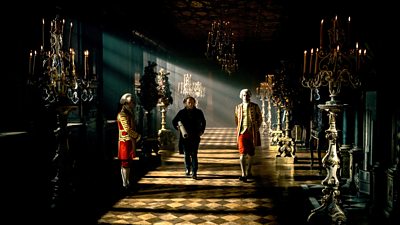
Sets & Premises safety guide
This Safety Guide collates those of our Safety Guidelines relating to construction activities (on sets or other structures, including under 'CDM') and to the occupation / use of building premises (studios or locations). -
 This site is for ����ý Employees or potential future employees only. If you are not a ����ý employee or looking for further information regarding ����ý Access Services then please click on another page from the menu above, where you can find out more about Remploy.
This site is for ����ý Employees or potential future employees only. If you are not a ����ý employee or looking for further information regarding ����ý Access Services then please click on another page from the menu above, where you can find out more about Remploy. -
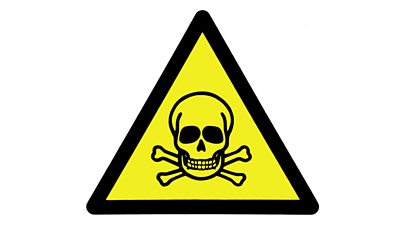
Asbestos Management on ����ý premises
This is a summary of the way that asbestos is managed in ����ý Buildings. It supplements the information about managing asbestos on productions. -
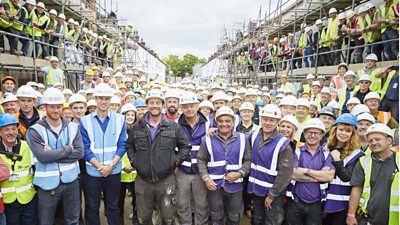
CDM Overview
Legislation to ensure the safe design and construction of structures was updated in April 2015, namely the Construction (Design and Management) Regulations 2015 (CDM 2015) -

CDM 2015 - The ����ý Approach
Guidance on the practical application of the Construction (Design and Management) Regulations 2015 across the ����ý -

First Aid in ����ý Premises
This page describes how first aid is arranged in ����ý premises. It supplements the guidance to first aid on productions. It is aimed at people who need to decide what provision to make for first aid on ����ý premises. It also provides the arrangements and numbers for contacting ambulances and the National Central Control Room (NCCR). -
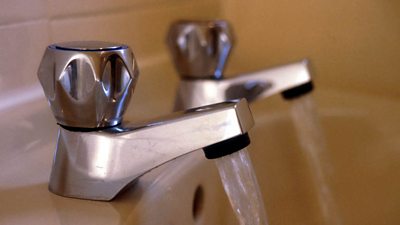
Legionella in Premises: Control of
This guidance provides an overview of how water systems are managed in premises to minimise the risks from the Legionella bacteria. -
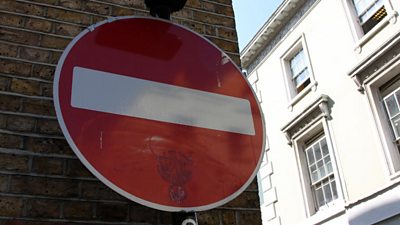
Permit to Work in ����ý Buildings (Restricted Work)
Some work in ����ý buildings is restricted and you have to get permission, called a Permit To Work (PtW) to do it. -
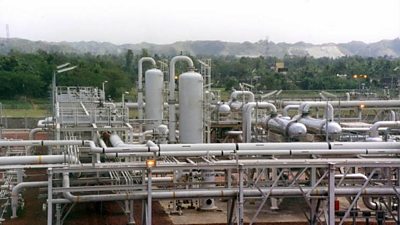
Pressure Systems
A guide to pressure systems in buildings. Pressure Systems include all plant/systems that contain a ‘relevant fluid’, defined as steam or gas under pressure and liquids under pressure which become gases upon release to the atmosphere, at a pressure greater than 0.5 bar (about 7psi) above atmospheric (except for steam). Around the ����ý there are heating, fuel transfer, compressed gas and hydraulic systems used in program production, studios (e.g. Camera Peds), office and maintenance facilities. -
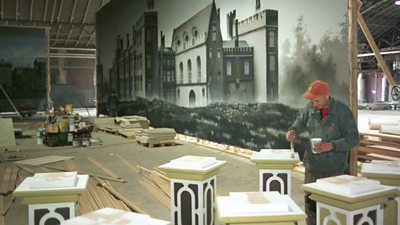
Sets: Safety of
This Safety Guideline is concerned with the construction and use of production sets and associated scenery used in studios and on locations.
More from SSR
-
Your platform to record accidents, risk assessments, assurance monitoring and inspections
-
Safety Equipment Stores
Just one number to call: 020 3614 5155 -
����ý Safety Guidelines
An A-Z of ����ý's Health and Safety Guidelines -
Safety Advice Line: 0370 411 0464 Email: safety@bbc.co.uk
Events guidance - key links:
- Exhibitions
- General Guidance
- Indoor Location Recce Checklist
- Outdoor Location Recce Checklist
- Major Incidents & Emergency Planning
- Marketing and Promotional
- Noise Exposure
- Planning and Management
- Responsibilities
- Responsibilities Form
- Laser Lighting Effects
- Strobe Lighting
- Temporary Stages and Rostra
Health topics - key links:
- (����ý network only)
- Contributors Fitness to Participate
- Display Screen Equipment (DSE)
- (����ý network only)
- First Aid and Welfare on Location
- International Travel - Risks & Health
- Manual Handling
- Mental Health: Homepage
- (����ý network only)
- Personal Health and Wellbeing
- Pregnancy
- Psychological Trauma Support & Trauma Risk Management (TRiM)
- Tiredness and Fatigue
- Travel Health Contacts
����ý High Risk - key links:
- CBRN and Industrial Spills
- Covert Filming
- Crisis Management and Security Support
- Demonstrations, Protests and Crowds
- Disaster Coverage
- Door Stepping
- (����ý network only)
- (����ý network only)
- Public Order
- Safety Equipment Stores
����ý Journalism - key links:
����ý Productions - key links:
- Aerial Filming and Airfields
- Animals: Displaying and handling for performance
- Boats: Working on
- Children and Young People
- Driving
- Electrical Equipment and Systems
- First Aid and Welfare on Location
- Food Safety (Cooking and Catering)
- Remote Location Working
- Roads and Streets: Working by
- Security of Productions on Location
- Stunts
- Tiredness and Fatigue
- Unmanned Aerial Systems (UAS aka Drones)
- Vehicles: Recording in, from and around
- Working at Height: Mobile Elevating Work Platforms
- Working at Height: Tower Scaffolds
����ý Radio - key links:
- (����ý Network only)
����ý Security - key links:
����ý Sport - key links:
About this site
This site describes what the ����ý does in relation to managing its health, safety and security risks and is intended for those who work directly for the ����ý.
It is not intended to provide instruction or guidance on how third parties should manage their risks. The ����ý cannot be held liable for how this information is interpreted or used by third parties, nor provide any assurance that adopting it would provide any measure of legal compliance. More information
Some links on this site are only accessible when connected to the ����ý network
